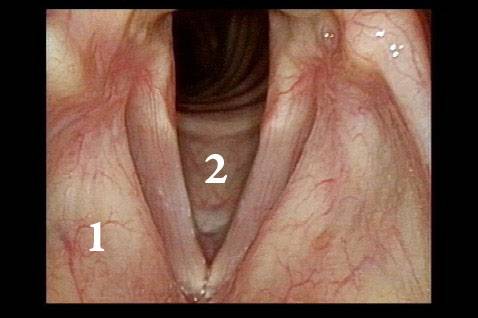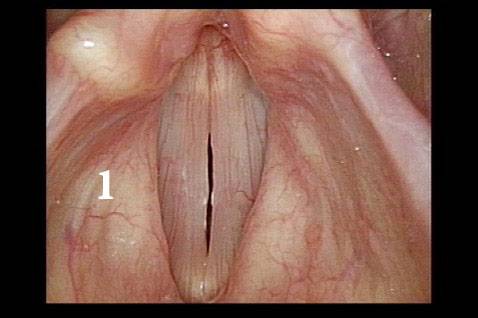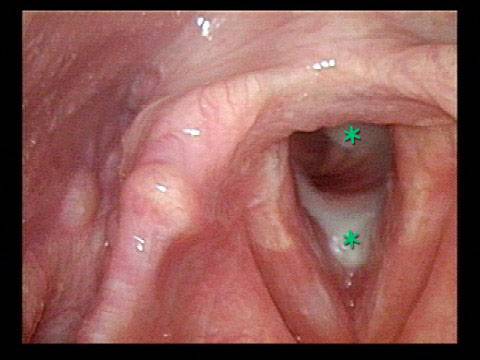Infection or inflammation of the vocal cord mucosa, caused by viral infection. The mucosa becomes pink or red, and the normally thin mucus blanket increases in volume and can become more viscous. If the mucosa becomes sufficiently inflamed and edematous, an individual can lose his or her voice transiently (for one to three days, typically). An analogy for these tissue and secretional changes in the larynx is viral “pink-eye.” For treatment, antibiotics are of no benefit; instead, as the patient waits for the infection to pass, supportive measures such as voice rest and hydration are suggested.
See also: candida laryngitis, ulcerative laryngitis, laryngitis sicca, bacterial laryngitis, post-surgical laryngitis,
Acute Laryngitis “Redness”
Occasionally, the findings of acute laryngitis are not as “dramatic” as the voice change would suggest. There is not necessarily a lot of swelling, but instead, a diffuse pinkness or redness along with a change in secretions.



